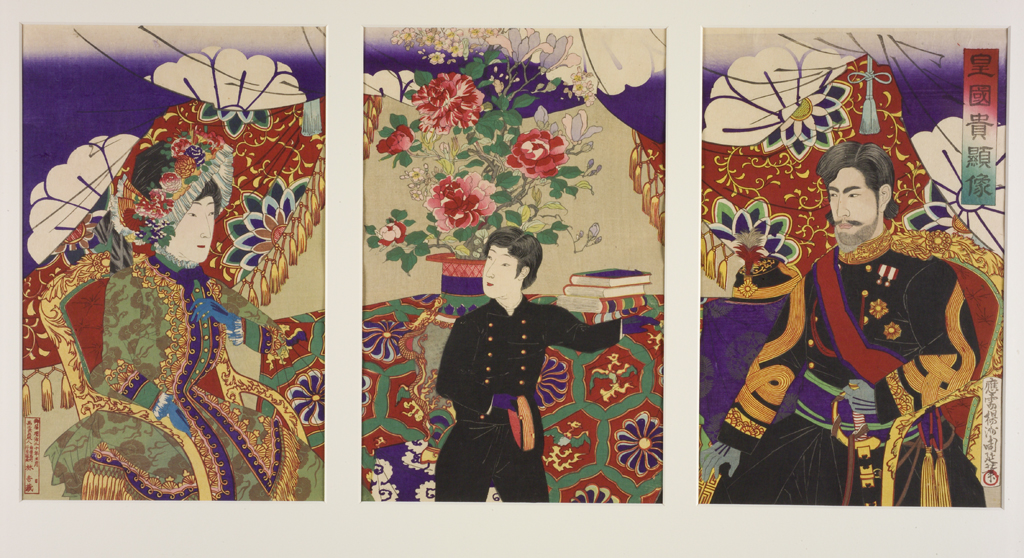Sacred Space and Japanese Art at the Spencer Museum of Art
Entry by Eunho Park
From right to left, Toyohara Chikanobu illustrates Emperor Meiji (Mutsuhito), Prince Yoshihito (future Emperor Taishō), and Empress Haruko (Masako) in three separate prints. With a short haircut and modern Western dress, the Emperor and his family show a highly Westernized lifestyle unlike their figures in Japanese-style portraits. Set against the background of an elaborately decorated interior of royal space, the chrysanthemums on the curtain behind the family symbolize imperial heritage. This print was intended to promote Westernization by showing the Imperial family in a modern Western style.
Before the end of the Pacific War (1939–1945), Japanese Emperors were considered to be living gods. To maintain his divinity, this divine leader, his palace, and his loyal attendants were completely veiled to the public. During the Meiji Restoration, the Emperor encouraged the Japanese people to accept Western culture and knowledge, as he believed it would enhance Japan’s strength and position in the world. This triptych promotes Western enlightenment by depicting imperial life surrounded by Western culture, exemplified by hardcover books. Like European monarchs, the Emperor had his portrait mass-produced to demonstrate his active attitude toward Westernization. This illustration is important because it publicizes the divine leader and his sacred life, which would have shocked commoners of earlier times.

